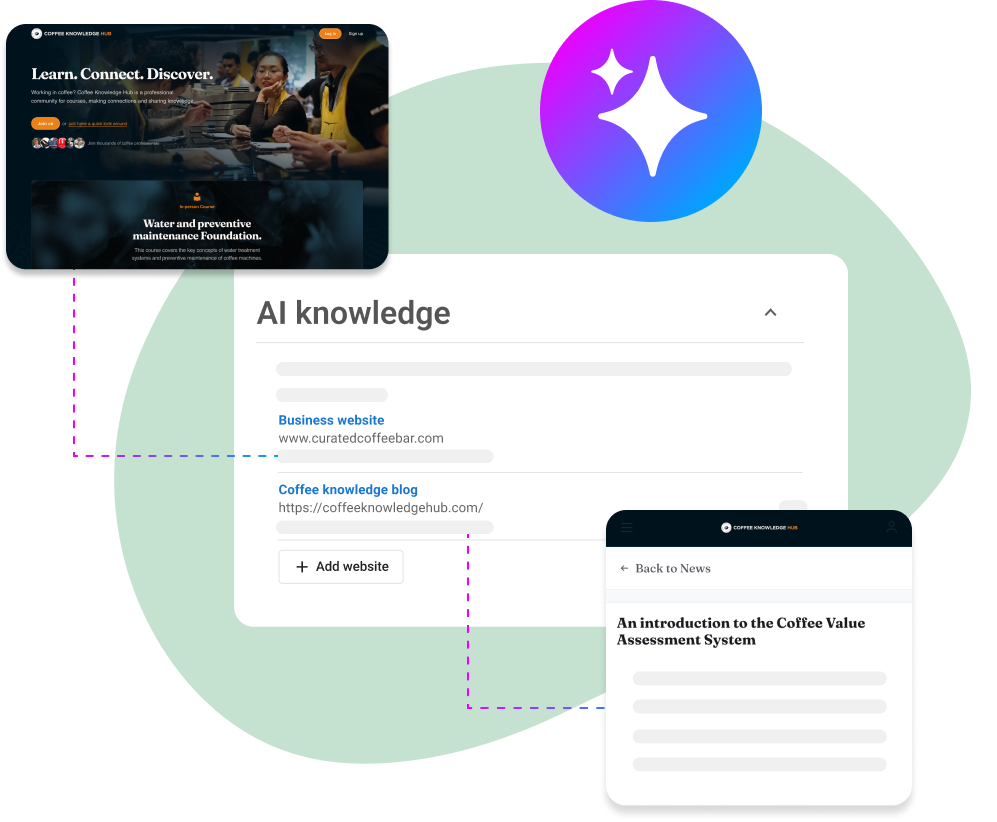Make Your Business AI-Ready in 5 Steps
Implementing AI into your business strategy can be transformative, but there are some best practices to make sure you are set up for success. Here’s a comprehensive checklist to make sure your business is ready to make the most out of AI.

1. Develop a Style Guide
A clear brand voice ensures that any AI you partner with represents your business authentically and consistently across all points of engagement. Create a detailed style guide that outlines your brand’s tone, personality, goals, and core values before you dive into creating content with AI. Specify how formal or casual the tone should be, and any ‘do’s and don’ts’ for messaging.
- Identify key attributes of your brand personality
(e.g., friendly, professional, humorous). - List specific words and phrases that resonate with your brand identity.
- Create sample messages for AI to reference across different platforms
(e.g., email, social media, website).
2. Think of AI as a partner, not just a tool
Viewing AI as a strategic partner helps you see its potential to contribute to your brand’s goals rather than just perform basic tasks. Treat AI as part of your team, and use it to enhance human creativity and efficiency. Identify areas where AI can supplement your team’s efforts, whether it’s by generating ideas, analyzing trends, or personalizing customer interactions.
- Identify high-impact areas where AI can collaborate with human efforts, such as creating personalized email content or analyzing customer feedback.
- Train your AI as you would other team members. Remember to “upskill” your AI when you have new knowledge, processes or brand information they need to know.

3. Regularly audit the knowledge that feeds your AI
AI-driven interactions are only as accurate and relevant as the data they’re based on. Clean, well-organized data enables AI to make informed decisions that reflect your brand and meet your goals.
- Regularly update and maintain your data sources, ensuring that outdated or incorrect information is removed. List specific words and phrases that resonate with your brand identity.
- Review your customer data for accuracy and relevancy. Update any outdated information.
- Pay attention to the latest trends and make sure you are telling the right story on your website and other sources that feed your AI knowledge base.
4. Experiment and learn with your AI
AI thrives on learning and adaptation. Experimentation along with your AI allows you to discover what resonates with your audience and quickly adapt. Start by testing AI in small, manageable areas, like generating social media posts or customer follow-up emails. Track performance metrics to see what engages customers best, and adjust based on feedback.
- Select one or two specific tasks to automate initially, like scheduling social posts
- Set performance goals for each test (e.g., response time, customer engagement, click-through rates).
- Use insights from each test to fine-tune AI applications and expand to other areas once you’re confident in the results.
5. Align AI with Business Goals
Centralizing AI-driven content and data helps maintain consistency across all channels and gives you a single source of truth for measuring performance. Your Business App is your command center, and acts as a system of record for all things content and data.
- Make it a habit to regularly review centralized data to adjust your strategy based on customer engagement
- Regularly align your business goals with your AI and make sure it is telling the story you want it to!
With these 5 steps in mind, you are ready to kickstart and maintain a solid partnership with AI.




